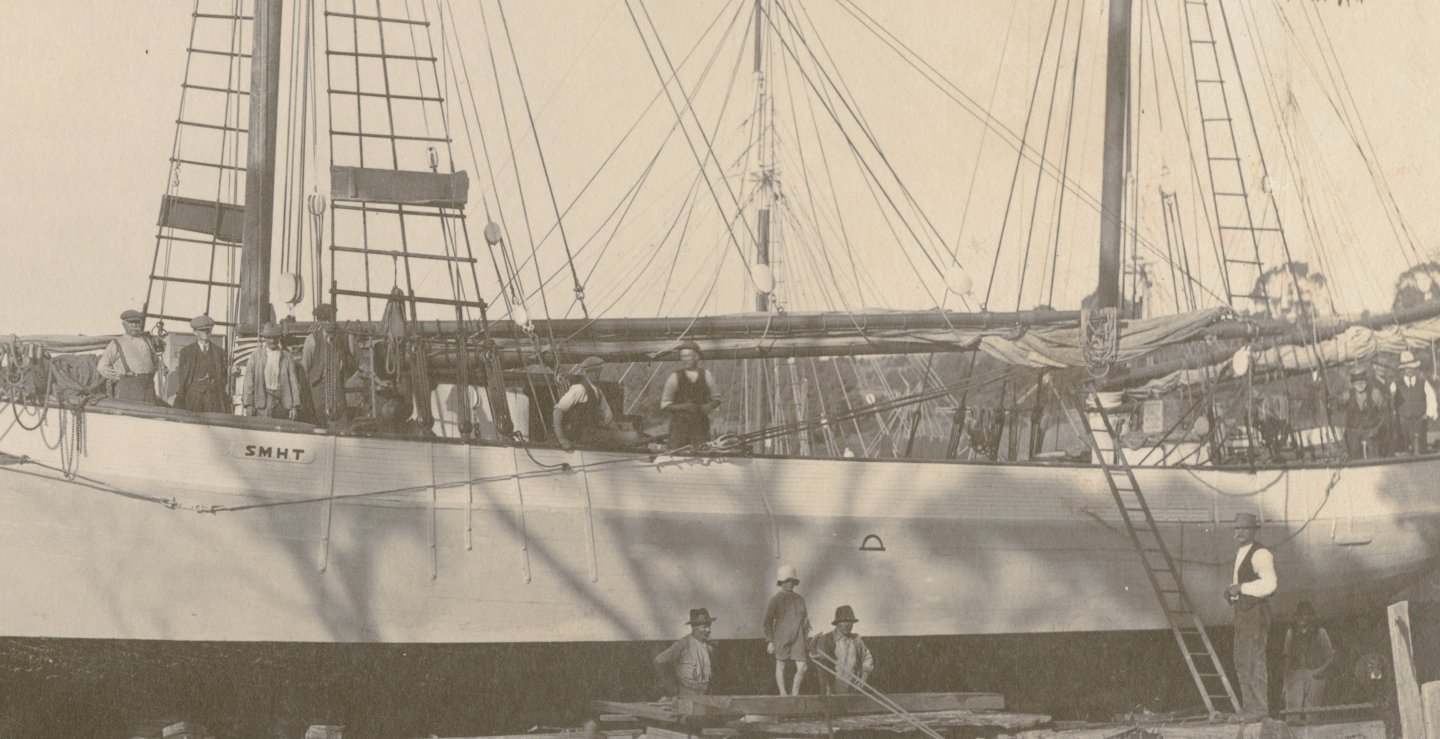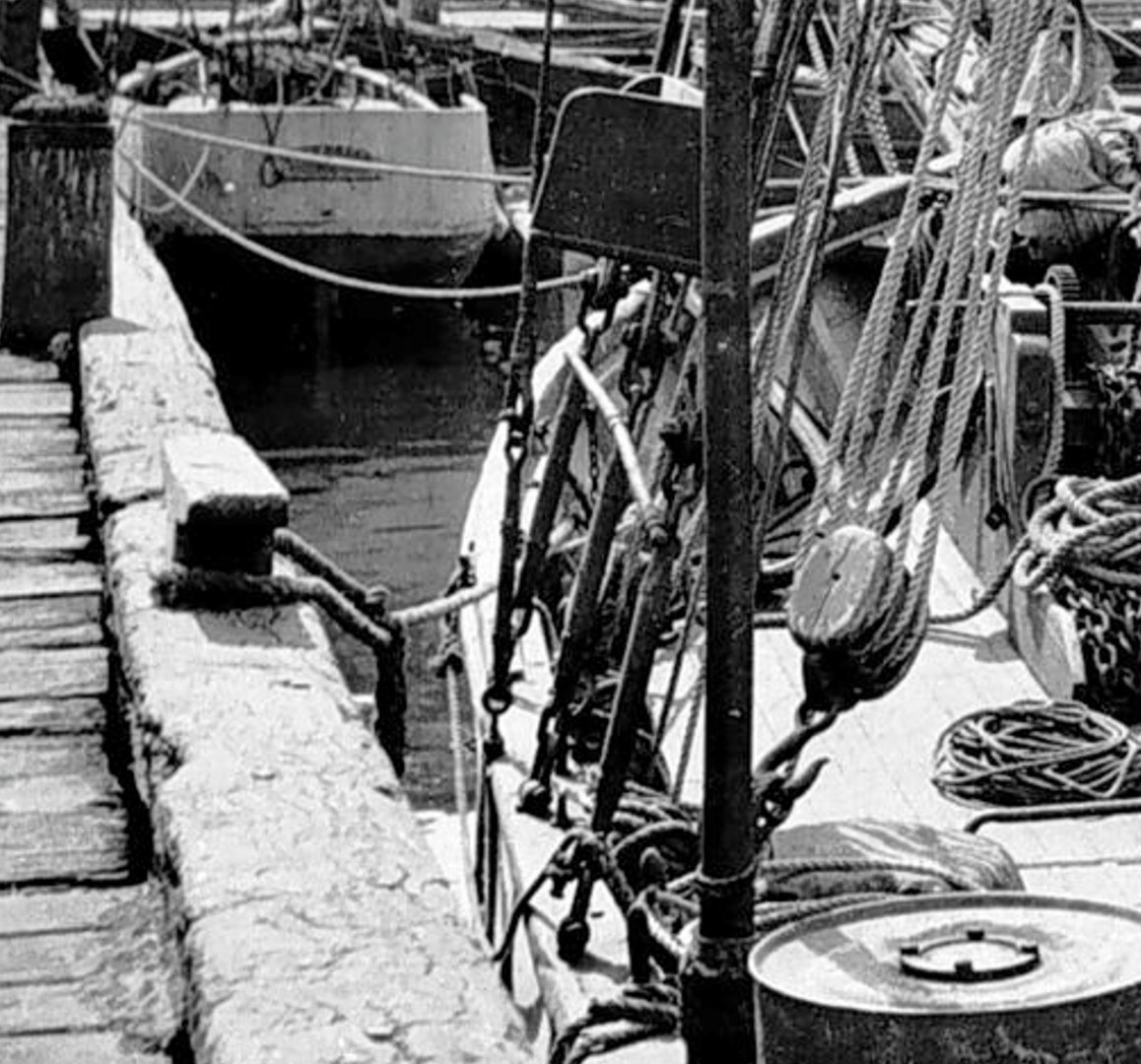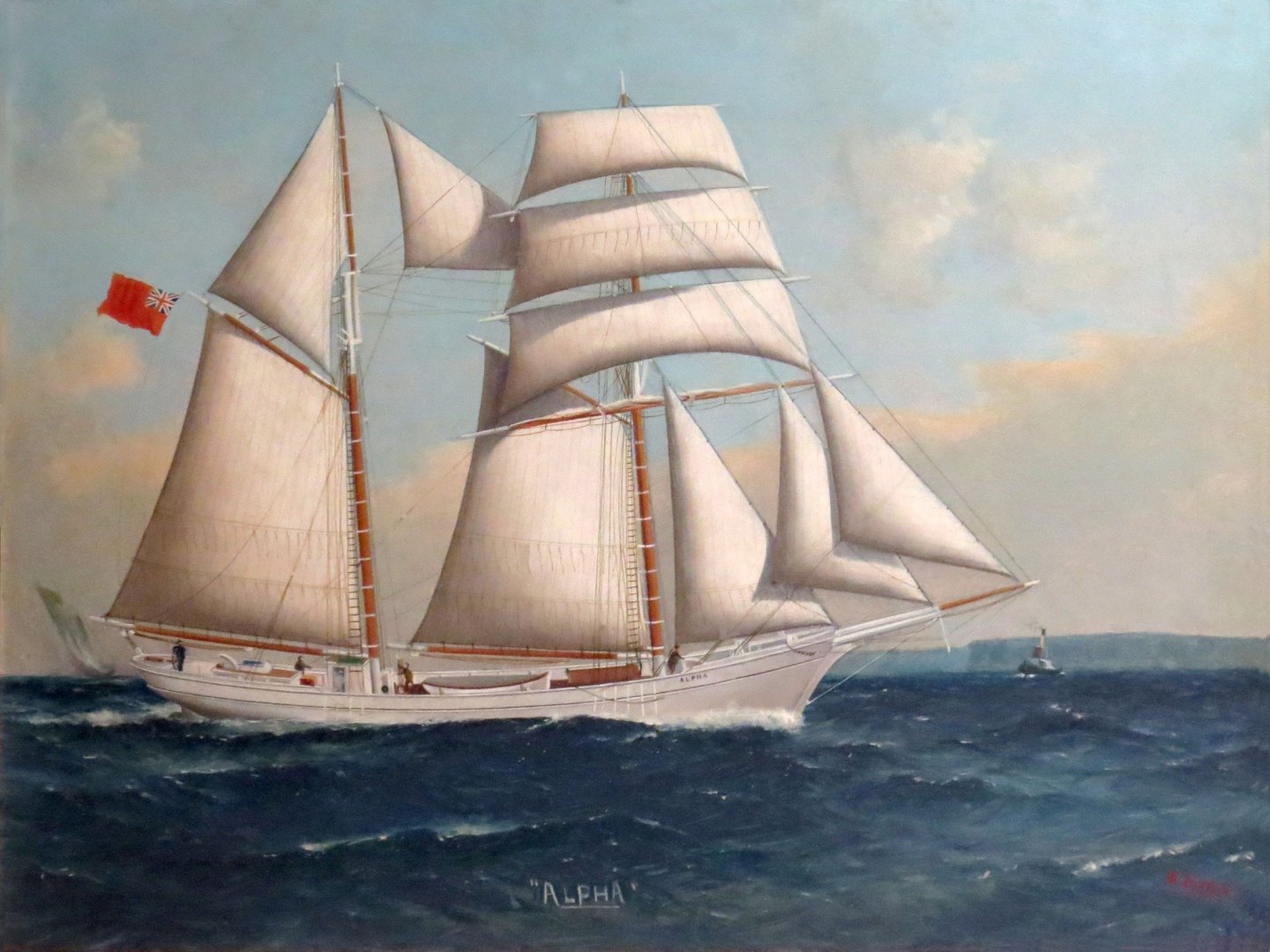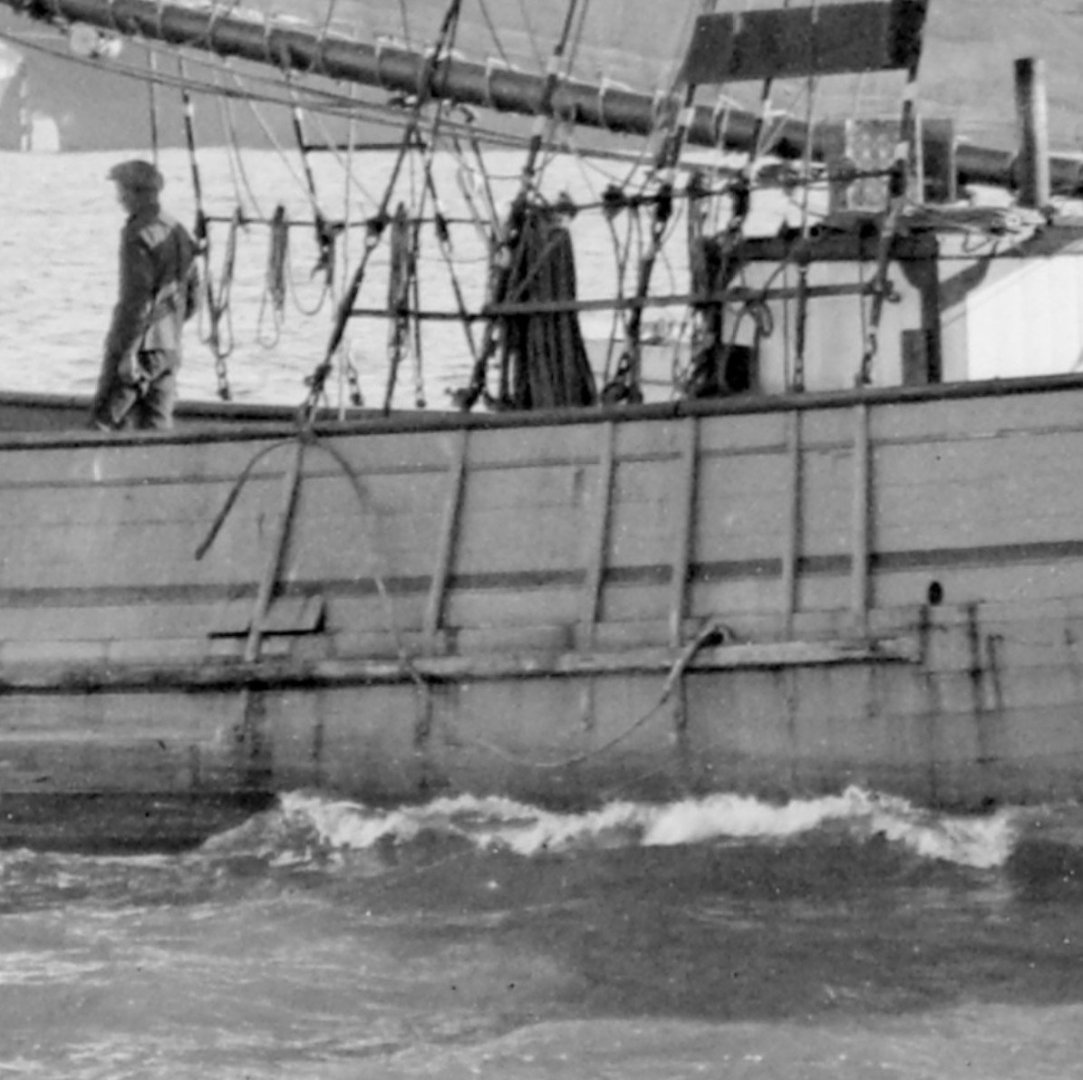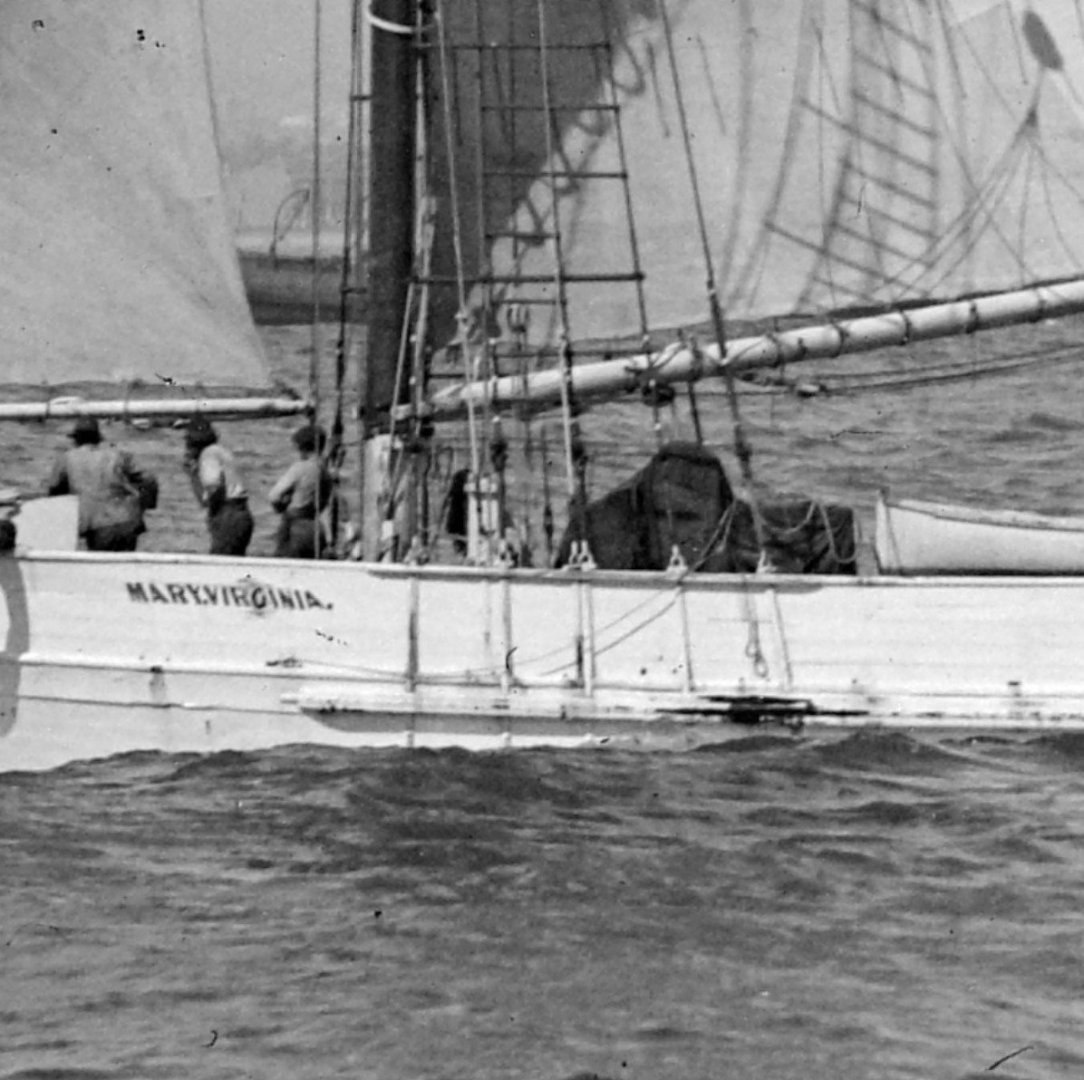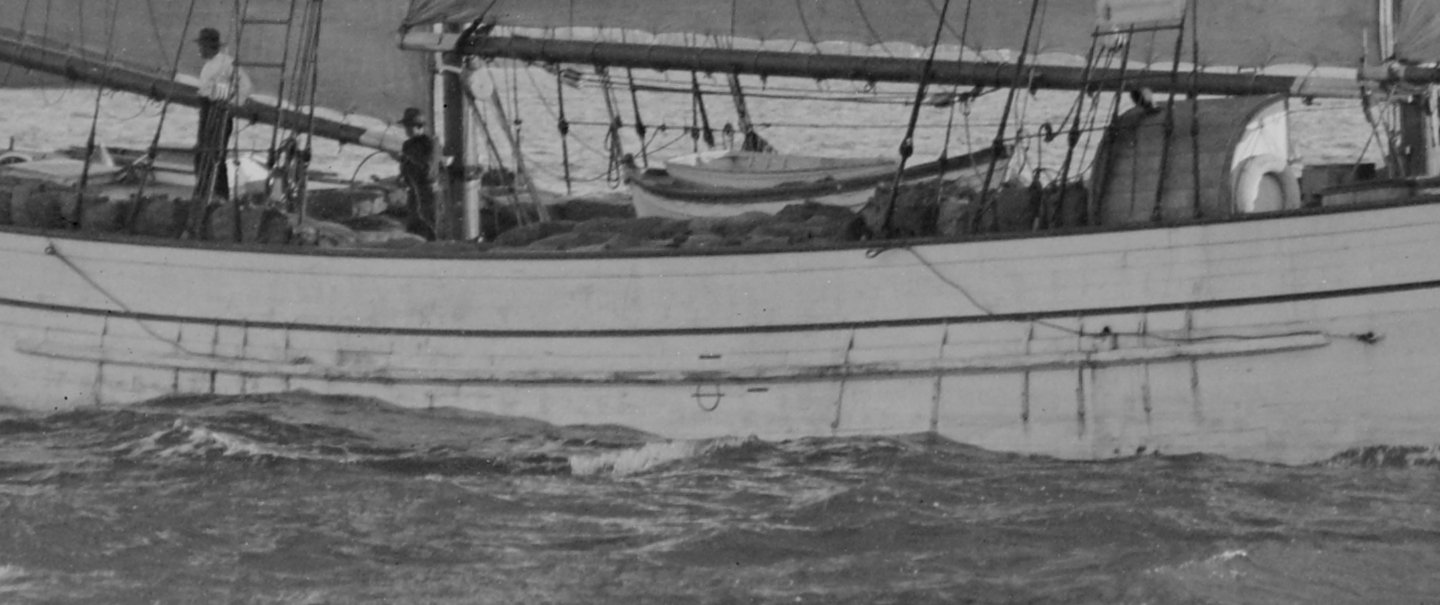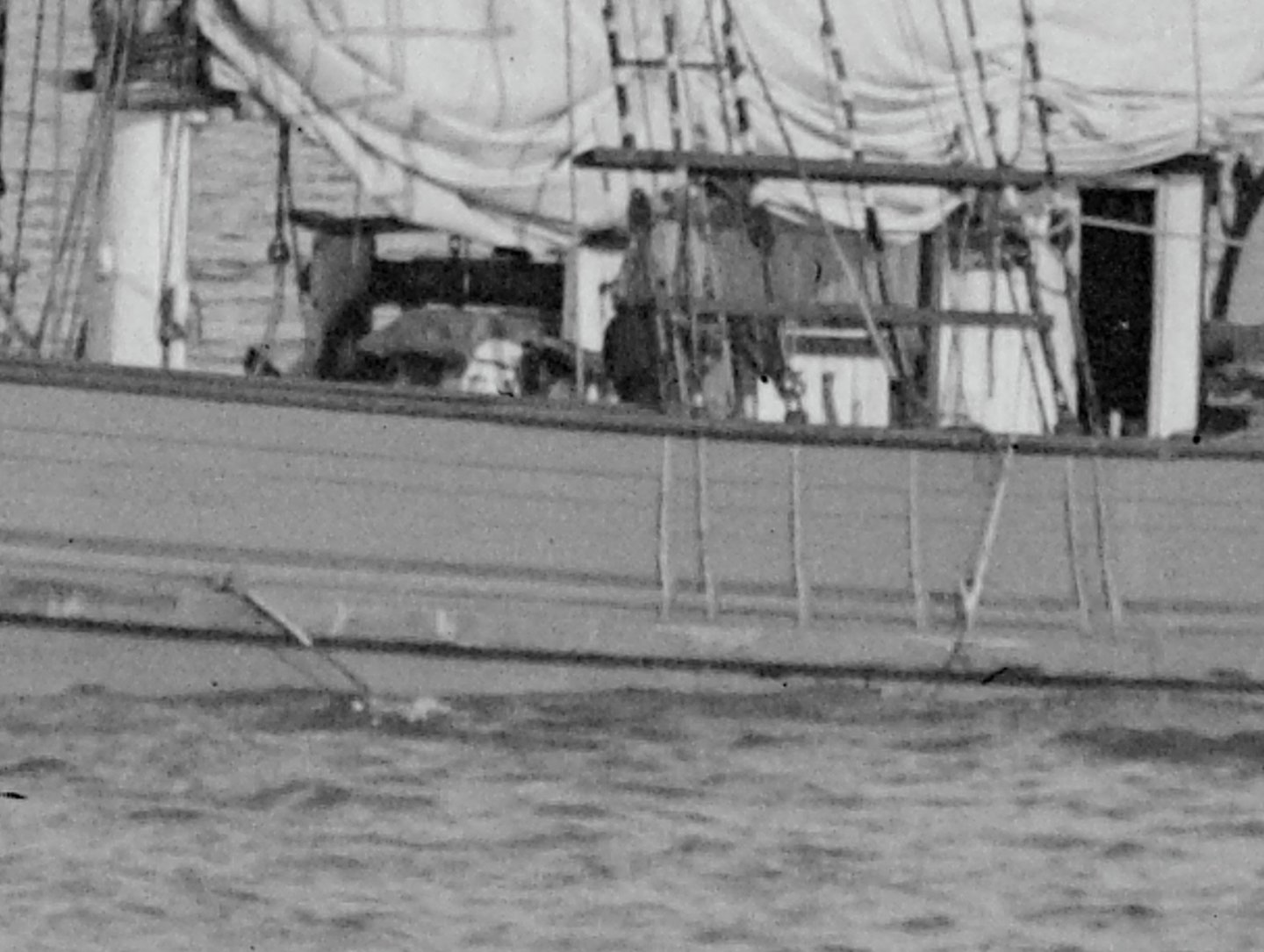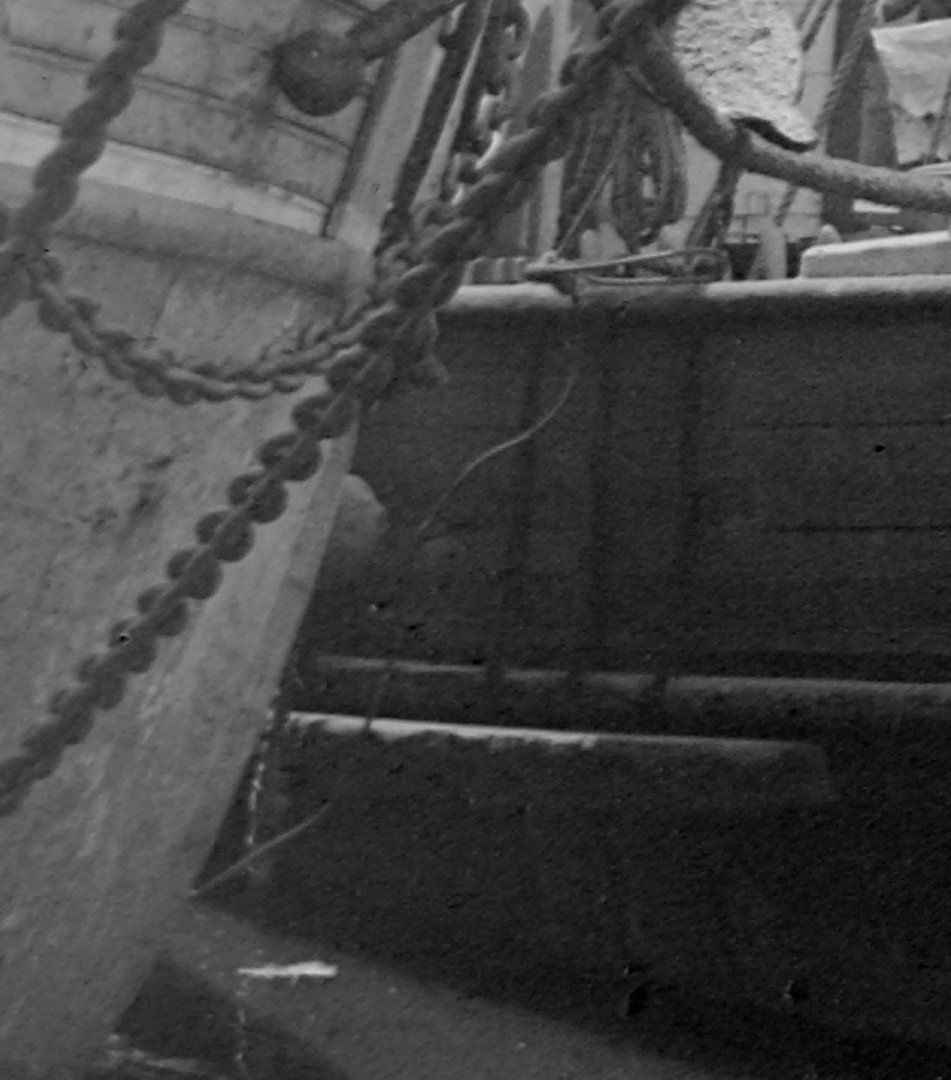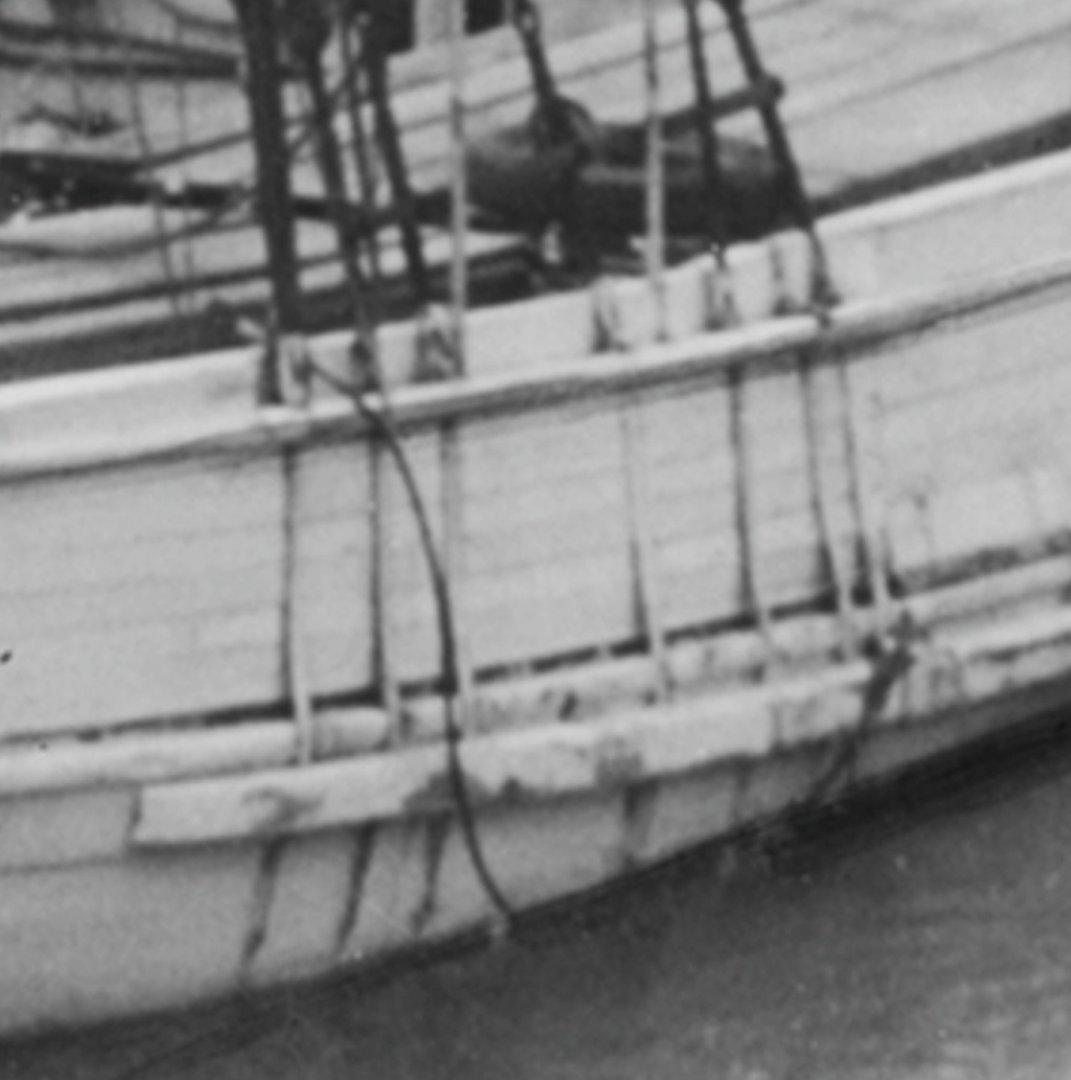-
Posts
13 -
Joined
-
Last visited
Profile Information
-
Gender
Male
-
Location
Canberra, Australia
-
Interests
Australian wooden-hulled coastal trading vessels (sail and steam)
Recent Profile Visitors
-
 Smokietoon reacted to a post in a topic:
Nautical and Model Building Resources
Smokietoon reacted to a post in a topic:
Nautical and Model Building Resources
-
 uss frolick reacted to a post in a topic:
Nautical and Model Building Resources
uss frolick reacted to a post in a topic:
Nautical and Model Building Resources
-
 Ian_S reacted to a post in a topic:
Mystery wire rope across chainplates on 1920s trading schooner - what is it?
Ian_S reacted to a post in a topic:
Mystery wire rope across chainplates on 1920s trading schooner - what is it?
-
 cotrecerf reacted to a post in a topic:
Mystery wire rope across chainplates on 1920s trading schooner - what is it?
cotrecerf reacted to a post in a topic:
Mystery wire rope across chainplates on 1920s trading schooner - what is it?
-
 Keith Black reacted to a post in a topic:
Mystery wire rope across chainplates on 1920s trading schooner - what is it?
Keith Black reacted to a post in a topic:
Mystery wire rope across chainplates on 1920s trading schooner - what is it?
-
Nice point. Here's my take on that. There were only two regions in Australia that had fairly large fleets of wooden-hulled trading sailships: the northern coast of New South Wales trading into Sydney, and the region around Bass Strait further southeast -- a kind of triangle between the southeast Australian ports of Melbourne, Hobart and Adelaide. Steamships displaced sail traders almost entirely in NSW by 1910, while in the southeast, economic factors (not at all well studied as far as I know) meant that sail traders survived in strong numbers until World War Two. There was a bit of wooden sailing trader interaction across the Tasman Sea between New Zealand and Sydney, and a fleet of wooden "scows" there in NZ, but that was far away. So the southeast Australian sailing traders were technologically isolated in the 1910s to 30s: there were no other interacting sailing fleets by then. When you look at various aspects of technology on these vessels, you do see, in the 20th century, more flecks of vernacular adaptations within that SE Aust fleet such as this one we've just discovered. I'm chuffed because here's another one, and once again, nobody knew ... just as well I'm writing a book about it. I do especially like this development though, because there's a hint here that this was about speed, of a kind of "don't try this at home" pushing of the limits by expert sailors operating in hard and dangerous conditions who were driven by freight rates, sure, but I have a feeling this might have been a culture thing too -- about thrill and exhilaration shared by a very select group who didn't broadcast it, and nobody else, even at the time, seems to have known what they were on about. Maybe a bit like surfing culture before the Beach Boys. I might be getting ahead of myself there, but it's an appealing thought.
-
 paul ron reacted to a post in a topic:
Mystery wire rope across chainplates on 1920s trading schooner - what is it?
paul ron reacted to a post in a topic:
Mystery wire rope across chainplates on 1920s trading schooner - what is it?
-
 Ian_S reacted to a post in a topic:
Mystery wire rope across chainplates on 1920s trading schooner - what is it?
Ian_S reacted to a post in a topic:
Mystery wire rope across chainplates on 1920s trading schooner - what is it?
-
 trippwj reacted to a post in a topic:
Nautical and Model Building Resources
trippwj reacted to a post in a topic:
Nautical and Model Building Resources
-
 Ian_S reacted to a post in a topic:
Mystery wire rope across chainplates on 1920s trading schooner - what is it?
Ian_S reacted to a post in a topic:
Mystery wire rope across chainplates on 1920s trading schooner - what is it?
-
Wayne, this is an impressive and useful list, which would deserve the occasional update. I appreciate that your bibliography is tilted toward the great days of sail, say up to the mid-19th century; and that it's just a listing from your own personal collection rather than an encyclopedic coverage. In that vein, I still think there are a few things that could be usefully added (both to the list, and perhaps to your library). For seamanship, I notice you haven't included John Harland's 1984 "Seamanship in the Age of Sail" (London: Conway Maritime Press, 320p). It's no lightweight, and I'd be surprised if anyone can surpass it for depth of scholarship or comprehensiveness. A grand book to be sure. Again on seamanship, two books written in modern times, but relating to square-riggers, and written from an instructive point of view for sail training ships are:Regan & Johnson's "Eagle Seamanship: a manual for square-rigger sailing" (Annapolis: Naval Institute Press, various editions -- I have the 1981 1st edition, and the 3rd edition was published 1990); and Willoughby's "Square Rig Seamanship" (London: The Nautical Institute 1997) is a captain's view of what various levels of seaman should be expected to know, again on training ships. You could say these two aren't "authentic" in that they were written lately, but I would say that they are, that they are focussed on the same mechanics of sail handling and sailing tactics, and present an easier to comprehend approach to the same material you see from the 18th and 19th century writers, without the tangled phraseology. On Tonnage, since you list Owens' (1907) clearly-written "The Tonnage and Freeboard of Merchant Ships" , then I would also recommend E.W. Blocksidge, "Hints on the Register Tonnage of Merchant Ships" (Liverpool, Charles Burchill & Sons, 1933). Apart from the challenge of actually finding a copy, it's also clear and instructive. Since you've listed a fair few David MacGregor books, another is "Fast Sailing Ships: their design and construction 1775-1875" (London: Conway; 1st ed 1973, 2nd ed. 1988). Mostly its about clipper ships, and you know MacGregor's presentation -- dense with plenty of detail, bits and pieces, old plans and a chronological narrative. While on clipper ships, I'm surprised you didn't list George Campbell's 1974 "China Tea Clippers" (London: Adlard Coles). His copious drawings are extraordinary for their precision, detail and depth of knowledge -- and their beauty. It's really a must-have, no two ways about it. I suppose this goes under shipbuilding, Basil Greenhill and Sam Manning's "The Evolution of the Wooden Ship" (London: B.T. Batsford, 1988). I don't know about the evolution bit, if there was really an attempt to do justice to that idea, it was well and truly upstaged by the pages and pages of Manning's drawings of all stages in the construction of a late-19th century British-style two-masted wooden coastal schooner. A first-class book if that's a topic of interest. I could go on about so many regional studies of shipping types -- every country has its local literature on their particular vessels, fleets and industries engaging wooden ships. Tempting, but that's just too much. Maybe I can close this list with two slightly odd-ball recommendations, both in German language. Both of these probably best fit under your "Masts and Rigging" category. I mention them because I don't think they are likely to get many English speakers recommending them: F.L. Middendorf 1903, "Bemastung und Takelung der Schiffe", an extremely deep engineering text for shipyard designing and building the large ocean carriers of the turn of the century -- the so-called "grain ships" for example -- but incorporating design details for other late-nineteenth century merchant sailing vessels as well. He doesn't worry about wooden hulls, because this is a book that was meant for the naval architecture offices of European industrial shipbuilding yards -- it's all steel. But, it's about the masting and rigging of these ships, so that's not limited to steel. Astoundingly detailed, there's just nothing like it in English language; but it must be said it is austere and intellectually demanding. The book was photo-reproduced (perfectly of course -- after all it's Germany we're talking about) in 1971 by Horst Hamecher Kassel. You would need to have a serious interest in large ocean carriers to need this book; but if you are such a person, this is the book to have. Jens Kusk Jensen, "Handbuch der Praktischen Seemanschaft auf Traditionellen Segelschiffen" (translates to "Handbook of Practical Seamanship on Traditional Sailing Vessels"). This was originally published in 1901, 2nd edition 1924, originally written in Danish. The 1924 edition was translated into German in 1989 and published by Palstek Verlag GmbH, Hamburg. There is no English translation. I get the impression this work is very well known among the traditional seamanship fraternity in Denmark and Germany. It covers masting, rigging, sails and seamanship. Unlike Middendorf, it is a more down-to-earth treatment but again contains some details not seen in English books. However, translation is heavy going if you're not a German speaker, and really most of the content can be gleaned from English works. It's just that there is so much in one place here. Enough for now, eh?
-
 druxey reacted to a post in a topic:
Mystery wire rope across chainplates on 1920s trading schooner - what is it?
druxey reacted to a post in a topic:
Mystery wire rope across chainplates on 1920s trading schooner - what is it?
-
 catopower reacted to a post in a topic:
Mystery wire rope across chainplates on 1920s trading schooner - what is it?
catopower reacted to a post in a topic:
Mystery wire rope across chainplates on 1920s trading schooner - what is it?
-
 Kenchington reacted to a post in a topic:
Mystery wire rope across chainplates on 1920s trading schooner - what is it?
Kenchington reacted to a post in a topic:
Mystery wire rope across chainplates on 1920s trading schooner - what is it?
-
 Ian_S reacted to a post in a topic:
Mystery wire rope across chainplates on 1920s trading schooner - what is it?
Ian_S reacted to a post in a topic:
Mystery wire rope across chainplates on 1920s trading schooner - what is it?
-
 Ian_S reacted to a post in a topic:
Mystery wire rope across chainplates on 1920s trading schooner - what is it?
Ian_S reacted to a post in a topic:
Mystery wire rope across chainplates on 1920s trading schooner - what is it?
-
 Ian_S reacted to a post in a topic:
Mystery wire rope across chainplates on 1920s trading schooner - what is it?
Ian_S reacted to a post in a topic:
Mystery wire rope across chainplates on 1920s trading schooner - what is it?
-
 Ian_S reacted to a post in a topic:
Mystery wire rope across chainplates on 1920s trading schooner - what is it?
Ian_S reacted to a post in a topic:
Mystery wire rope across chainplates on 1920s trading schooner - what is it?
-
 Keith Black reacted to a post in a topic:
Mystery wire rope across chainplates on 1920s trading schooner - what is it?
Keith Black reacted to a post in a topic:
Mystery wire rope across chainplates on 1920s trading schooner - what is it?
-
I think we may have all been barking up the wrong tree. The following photo, which I've only just found (online at the Tasmanian Archives, I thought I'd exhausted that source years ago but here we are ... ) shows the rope in question. It is hooked to the single-sheave block of the foremast boom tackle of the gaff sail rig. So it's a part of the running rigging. I think what is in all the photos I've shown would be called a boom tackle pendant (or pennant). It relates to an explanation of boom tackles (also called boom guys) in Chapelle's "American Fishing Schooners" (p.357): "Their purpose was to hold the booms outboard when running before the wind the vessel rolling." (sic, seems to be missing a word or two). In the photo I've attached below, we see the single-sheave block with a hook that if not in use would be hooked to an eye under the boom a little aft of the boom jaws. The other block in the tackle is a double sheave block, hooked and moused to a wye band near the sheet wye toward the end of the boom (can't see that in the photo, but Chapelle's diagram shows it, as do Figs 10-12 to 10-14 of Bennet's Schooner Sunset. In Chapelle's description, "To guy the mainboom, the single block was unhooked and brought to the rail near the aftermost fore shroud and hooked into a staple on the rail cap. The fall was then led off and set up, then belayed on the pin in the boom jaws.". So there should be a pin in the boom jaws in the photo below, but it's obscured, so you can't actually see it. Chapelle goes on, and his next comment reflects what is also clearly depicted in Bennet's Fig 10-13, which shows the British version of the boom tackle pendant (or pennant): "The foreboom guy led to a staple on the bow chock rail ... the fall belaying on a cleat on the side of the foreboom. Racers sometimes had pendants for guys to hook into, to avoid overhauling the tackles, which were very long on a large schooner." So, unless someone raises objections, there we have it. These southeast Australian skippers in their sweet picturesque old-time sailing vessels, the seas already full of steamers and motor vessels, when out on the seas far from land where nobody was watching, turned into insatiable speed freaks who held the booms as far outboard as they could, by extending the boom tackle on long outboard pendants. The photo below, in full and at higher resolution is at https://libraries.tas.gov.au/Digital/LMSS761-1-595 So we have it? I'd be interested if anyone can provide more detailed references to boom tackles.
-
Over the years I've found many photos of these vessels, since they are my interest and I'm a deep-research type. Yes many were taken in or near docks, but surprisingly few taken of the dockside moorings. Usually it's a vessel approaching/departing port, or moored but taken photo taken across clear water showing the side away from the dock. But, I've attached the second of only two photos I have of these "mystery rope" vessels where you can see the actual "mystery rope" at the mooring. The first of those photos I included in the OP above. The second I'll attach below. Note that the rope is not in use. The ship is moored in the usual way. See my next post which I'll write immediately following on from this, with a big surprise. Anyhows, here's the photo -- at Little Dock in Melbourne, I guess in the 1920s, ketch is small but still unidentified. The rope is there, look hard and you'll see it.
-
 Ian_S reacted to a post in a topic:
Mystery wire rope across chainplates on 1920s trading schooner - what is it?
Ian_S reacted to a post in a topic:
Mystery wire rope across chainplates on 1920s trading schooner - what is it?
-
 Ian_S reacted to a post in a topic:
Topsail schooner sail plans and rigging
Ian_S reacted to a post in a topic:
Topsail schooner sail plans and rigging
-
 Ian_S reacted to a post in a topic:
Topsail schooner sail plans and rigging
Ian_S reacted to a post in a topic:
Topsail schooner sail plans and rigging
-
Yes, it does seem to fit into a pattern of local innovation, where, when you look closely at the trading ketches / schooners of the south east Australian area (let's say the vessels trading between Melbourne, Hobart and Port Adelaide), various items of deck machinery in particular begin to follow a different path from British and American practice. This seems to be more pronounced in the 20th century than the 19th. But, it's hard to develop a timeline because there aren't many images from the 19th century, and very little archaeology (and anyway the few Australian marine archaeologists that exist seem unaware of these developments so aren't looking for them). And then ultimately the developing local variations are cut short by the technological leaps brought on by world war two and the post-war economy, and never return. Since this thread has been up for a couple of days, and a fair few people from outside Australia have looked at it, with none having said that they've seen similar fittings (the supposed guest ropes) in their own countries, it's looking like yet another vernacular development in SE Australian maritime technology. There are perhaps a dozen books from the US about local schooner fleets which I haven't seen so I can't be sure, but for Britain I've seen -- or own -- quite a few such books and don't see these arrangements there. Still open to being corrected on this though, if anyone comes forward.
-
Just on paintings, here's another, but this time from the northern coast of New South Wales (the painting is held by the Nambucca Headland Museum, NSW), which is outside of the territory, if I can put it that way of all the other vessels showing these lines. Not that the painting here provides better visual detail, but as Kenchington says, demonstrates that the lines in question were important enough for the artists to include them -- but depicted in a neater and more orderly form than the reality captured in photos.
-
Yes, intriguing. As a guest rope to secure to -- say -- a river wharf, Jim Lad's suggestion for what these wire ropes might be has merit, I agree. But why not ordinary mooring lines from bow and stern? These wire ropes in the photos are always located at the shrouds. Perhaps one other possibility is that, since these small ships had no gangplank but rather, at low tide when the deck was well below the wharf, the crew had to leap or fall onto the shrouds and shimmy down to deck (noted in a book called Bass Strait Ketches (Harold Salter 1991), which is roughly what these vessels were). A guest rope at the shroud might have helped haul in the vessel to shore for that purpose. But that's just speculation -- I still don't know. Here's a few more photos that show how the fore end of the wire rope is fastened to an eyebolt (or so it appears) on the rubbing strake or thereabouts (actually called a 'sponson' in SE Australia back in the 1920s/30s, a terminological hangover from paddle steamer days I suppose), just below the deck-line. The aft end of the rope appears to have a spliced eye. In some of these photos -- which are all of different vessels -- you can see the rope is becketed to the back shroud.
-
John -- guest warps -- that was new to me so I looked it up. Forgive me for writing in below my notes from that little excursion. It could be a "guest rope" (related to a guess warp). I've quoted a few dictionaries here, but perhaps the Country Life Book of Nautical Terms comes closest to providing a clue in my own context: Country Life Books 1978, Nautical Terms Under Sail. London: Trewin Copplestone Publishing, p.20.03: (Nautical Terms under Sail was compiled with a stellar list of advisers) René de Kerchove, 1961, International Maritime Dictionary 2nd ed. New York: Van Nostrand Co., pp.341-42: Howard Patterson, 1885. The Yachtsman's Guide, p.142: I also looked at Gershom Bradford 1972, The Mariner's Dictionary (previous editions titled "A glossary of Sea Terms"), and Peter Kemp "The Oxford Companion to Ships and the Sea", as well as other entries for "guest rope" in various books uncovered in a HathiTrust keyword search, but although they all add to the context and semantic range, I don't think get to what I need here. The cluster of terms guess/guest/rope/warp all circle around the idea, more or less, of a line that is either used to pull a ship to wharf, or else used to tie a boat to a ship. The idea that the outboard end might well terminate in an eye splice, that could be shackled to a wharf or boat, suits the photos I attached above; which although blurry, plausibly have such a termination; while the other, inboard end, seems in the photos to be spliced or shackled to an eyebolt on the rubbing strake, consistent with the explanation of a guest rope. But why four such ropes? Excessive if the idea is to moor a boat to the ship. But perhaps not excessive if there is something peculiar about how these ships needed to come alongside a bush wharf to load sawmill timber or drop cargo to an isolated settlement. In which case two lines per side would make sense, which as circumstances required, might need to have been port or starboard. But it doesn't fully explain why ordinary mooring ropes wouldn't do. I don't feel this is "solved", but it might be getting close -- or else might just be barking up the wrong tree. I can't tell.
-
It could be. Along slightly similar lines, I've called my computer folder where I've collected photos of it, "painter thing". But why have so many such grab lines if just for that convenience? And why wouldn't it be seen more widely around the world if it was so useful for that purpose? Why leave one end loosely tied and not just fasten both ends to the rubbing strake, kind of like how a rope is becketed around a lifeboat? So I'm not satisfied with the grab line / painter idea. I have found photos of ten coastal sail traders with this feature, all located in the south east region of Australia (except one, from northern New South Wales). So it wasn't restricted to one vessel or one captain's own idiosyncratic ideas. All those vessels were coastal traders around the 100 to 150 ton mark. Smaller vessels in that region didn't have them, nor did larger vessels; and not all vessels in that region and of that size had them.
-
Ian_S changed their profile photo
-
A late reply (due to me being a new member here). These fairleads also appear on the Lawhill. (See Kenneth Edwards et. al., The Four-masted Barque Lawhill (Anatomy of the Ship series). London: Conway Maritime Press, 1996). Photos on pages 25 (fore deck) and 46 (poop deck) show lines being led through them. It may be possible to interpret where these ropes are leading from and to -- you can just see that, but I'm not qualified to make the interpretation. Drawings of the deck arrangements and fittings at the end of the book also show these fairleads (see pp. 69, 76, 83, 91 & 96). I suppose the point of me sharing this information is that, with enough different instances across a number of vessels, some common theme may emerge that more fully answers the OP's question: what were these fairleads for? It seems to still be an open question although some quite plausible albeit brief suggestions have been made.
-
I'm uploading seven images showing a wire rope seen running across the chainplates/shrouds on a pre-WWII three-masted coastal trading topsail schooner (150 tons approx). It appears on both port and starboard, on main and mizzen; so four instances on the vessel. I have no idea what it is. You can just see that the lines in question are bolted at their forward end to the top of the thick rubbing strake that is fixed running down both sides of the hull fore-aft just below the deckline. The aft end seems to be loosely shackled to any convenient shroud. All images are of the same ship, between 1917 and 1936. The vessel is Australian, but the influences in its fittings are British, American and vernacular. So the rope could be a thing from America, UK, or else an Australian idea. Ian Scales Canberra, Australia
-

Topsail schooner sail plans and rigging
Ian_S replied to Dr PR's topic in Masting, rigging and sails
Yes indeed, I have Marquardt's book -- never particularly cheap second-hand, but then, all used book prices have gone up. I'm just glad I built most of my library at the "old prices". I don't refer to Global Schooner that much because I'm interested in the late period commercial schooners, whereas Marquardt is biased toward the earliest period (prior to, e.g., wire rigging and the stylistic influence of the clipper hull). There's no doubt though that he approached the topic in a woo-free scholarly manner and with a typically Germanic thoroughness. If you ever got around to compiling an erratum of the typos and so on you have found in Global Schooner (particularly where misleading rather than trivial), I'd print it off and tip it into the back of my copy. You can't go wrong with Bertha L Downs -- I think it's a lovely book. Just with the caveat I mentioned above -- the authors didn't declare their sources so we simply have to put faith in their authority. Nice to 'meet' you by the way.- 104 replies
-
- schooner rigging
- Topsail schooner
-
(and 1 more)
Tagged with:
-

Topsail schooner sail plans and rigging
Ian_S replied to Dr PR's topic in Masting, rigging and sails
I have only just come across this great thread (having only recently signed up as a new member). It's against etiquette maybe to 'dig' an old thread, but other well-established members have recently revived it so ... A). Gore -- it has come up a few times in the thread, without anyone tying it back to the period literature. I'm not sure that its full meaning has been grasped by anyone here, although I also won't attempt a definition because I'm still learning about it. But the three main citations I have found are: 1) Samuel Sadler, The Art and Science of Sailmaking. London: Crosby Lockwood & Sons (two editions: 1892 and 1906). Both editions available on HathiTrust (rough scans by Google Books), and a nicer digitisation of the 1906 edition on Internet Archive. 2) Robert Kipping, Sails and Sailmaking. London: Crosby Lockwood & Sons. Many editions; the 14th edition of 1898 is available at Internet Archive. 3) Steel's Elements of Mastmaking, Sailmaking and Rigging (re-issue of the 1794 edition by Edward Sweetman publishers, New York, 1932) -- available on Internet Archive as a time-limited 'borrow'; but no doubt many here know this work well already. B). Technical details of schooner rigging: I also, as with many of the contributors to this thread (especially the OP), have a strong interest in getting the most complete picture of this that I can. In my case, I'm more interested in the small coastal trading topsail schooners in Australia & NZ about the end of the 19th century up to their demise (as topsailers) in the 1930s. I am familiar with all the books that others have suggested so far on this thread. I would mention two further books that I think are also important: 1) Basil Greenhill and Sam Manning, "The Schooner Bertha L. Downs" (Anatomy of the Ship series). London: Conway Maritime Press, 1995. Although focussed on just one vessel, it has a complete description of all yards, ropes, wires, blocks and dispositions. The one niggling thing is, from where did they get all that information? Primary sources for that particular ship, such as the "specification sheets" mentioned in passing on page 32 of the text? Or from a learned later authority, such as any of those listed in the foreword on page 6? This is not at all made clear, which it should have been. 2) Saving the best for last: Douglas Bennet, "Schooner Sunset: the last British sailing coasters", London: Chatham Publishing 2001. I don't think this book gets the recognition it deserves. I put it in the same category of "true greats" as Underhill's "Masting and Rigging" (1946) and Chapelle's "American Fishing Schooners" (1973). The author sailed on these ships in the 1930s, already with an eye to documenting them for posterity. There is a great deal on rigging, going well beyond Underhill's classic text. The downside of Bennet's book is that there are a number of production errors that materially confuse the content. I went through it very closely some years ago, and got in touch with the book's editor, David Clement. He helpfully sent me some of the original artwork that had been mudged in the book. After all that, I wrote a one-page erratum to be tipped into the back of the book, and sent it back to Clement, who didn't reply (true, sending someone an erratum of their work isn't on the list for winning friends and influencing people). Should anyone think it of interest, I will post that erratum. But that's a little off topic here, and any expansion on that should be in a new thread I think. That's my first post here. For the record I am a researcher and not a ship modeller, but I can see the point of modelling as a kind of test to see if you've really thought through the technical details to the point that the whole article is fully resolved. Ian Scales PhD Canberra, Australia- 104 replies
-
- schooner rigging
- Topsail schooner
-
(and 1 more)
Tagged with:
About us
Modelshipworld - Advancing Ship Modeling through Research
SSL Secured
Your security is important for us so this Website is SSL-Secured
NRG Mailing Address
Nautical Research Guild
237 South Lincoln Street
Westmont IL, 60559-1917
Model Ship World ® and the MSW logo are Registered Trademarks, and belong to the Nautical Research Guild (United States Patent and Trademark Office: No. 6,929,264 & No. 6,929,274, registered Dec. 20, 2022)
Helpful Links
About the NRG
If you enjoy building ship models that are historically accurate as well as beautiful, then The Nautical Research Guild (NRG) is just right for you.
The Guild is a non-profit educational organization whose mission is to “Advance Ship Modeling Through Research”. We provide support to our members in their efforts to raise the quality of their model ships.
The Nautical Research Guild has published our world-renowned quarterly magazine, The Nautical Research Journal, since 1955. The pages of the Journal are full of articles by accomplished ship modelers who show you how they create those exquisite details on their models, and by maritime historians who show you the correct details to build. The Journal is available in both print and digital editions. Go to the NRG web site (www.thenrg.org) to download a complimentary digital copy of the Journal. The NRG also publishes plan sets, books and compilations of back issues of the Journal and the former Ships in Scale and Model Ship Builder magazines.


